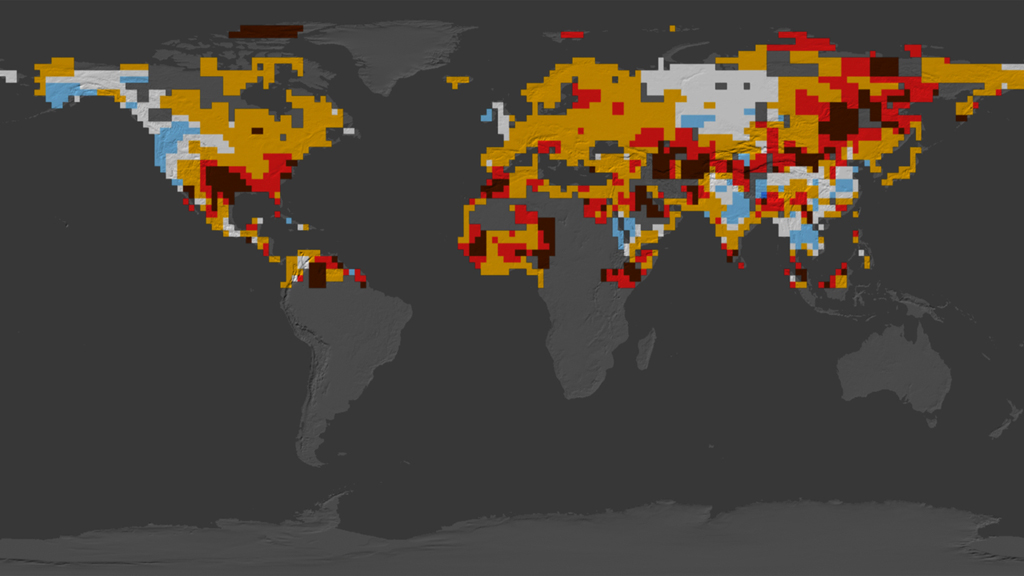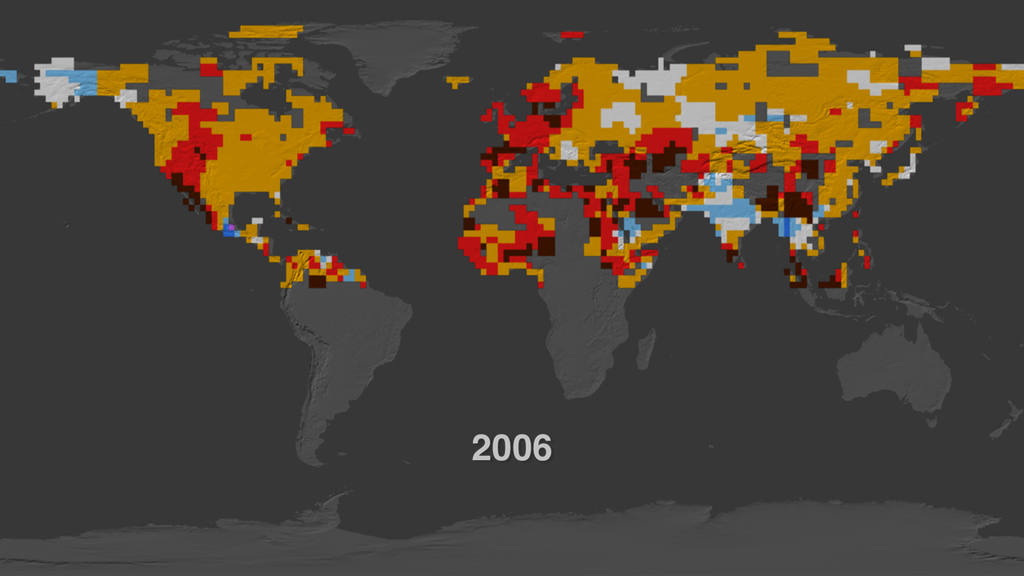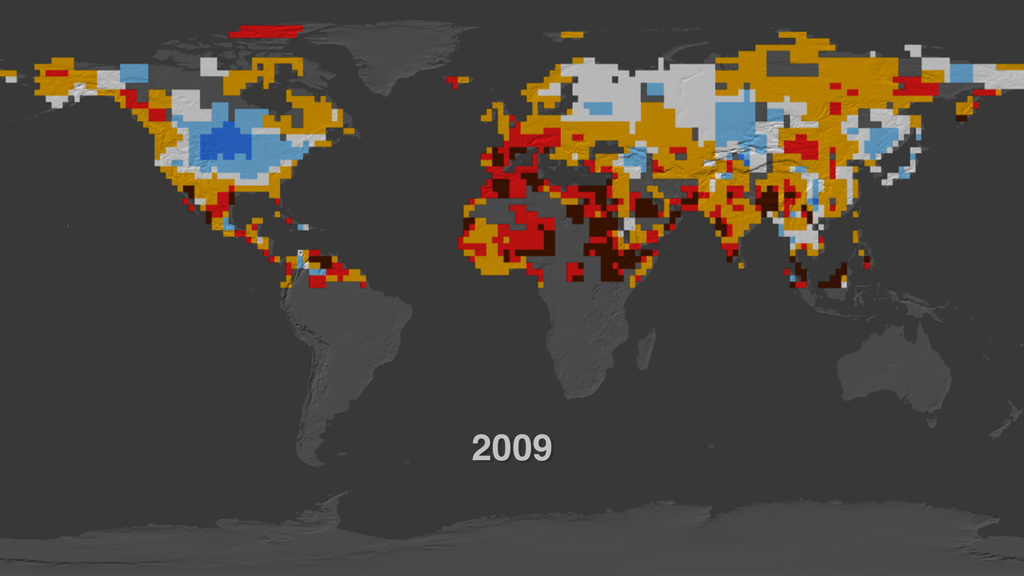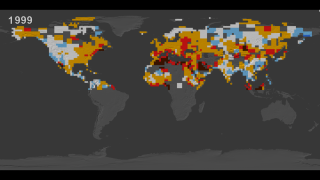Earth
ID: 11066

Summers in the Northern Hemisphere are getting hotter. Scientists at NASA's Goddard Institute for Space Studies analyzed temperature data for land in this part of the world and found that extremely hot summers are more likely now than they were 30 years ago. Crop-devastating heat through the summer of 2012, for example, included the hottest month on record for the contiguous United States. Scientists show the rise in likelihood of these events is the result of global warming, a connection that becomes evident in the statistics. The frequency of "hot" (orange), "very hot" (red) and "extremely hot" (brown) summers in the Northern Hemisphere in relation to the average summer temperature determined for the region from 1951 to 1980 can be seen in the visualization. Summers defined as "average" (white), unusually "cold" (light blue), "very cold" (dark blue) and "extremely cold" (purple) are also shown.





Hot Hot Heat






Related Story
For More Information
Story Credits
Visualizers/Animators:
Greg Shirah (NASA/GSFC)
Lori Perkins (NASA/GSFC)
Lead Scientists:
James Hansen Ph.D. (NASA/GSFC GISS)
Makiko Sato Ph.D. (NASA/GSFC GISS)
Lead Writer:
Kathryn Hansen (Wyle Information Systems)
Greg Shirah (NASA/GSFC)
Lori Perkins (NASA/GSFC)
Lead Scientists:
James Hansen Ph.D. (NASA/GSFC GISS)
Makiko Sato Ph.D. (NASA/GSFC GISS)
Lead Writer:
Kathryn Hansen (Wyle Information Systems)
Please give credit for this item to:
NASA's Goddard Space Flight Center
NASA's Goddard Space Flight Center
Short URL to share this page:
https://svs.gsfc.nasa.gov/11066
Keywords:
SVS >> App
NASA Science >> Earth
https://svs.gsfc.nasa.gov/11066
Keywords:
SVS >> App
NASA Science >> Earth








